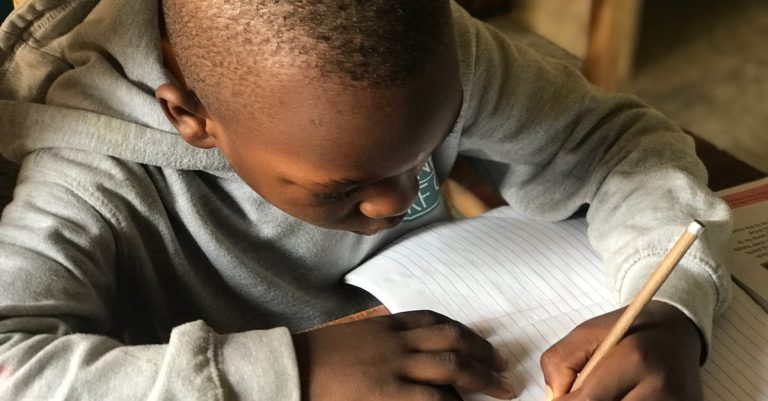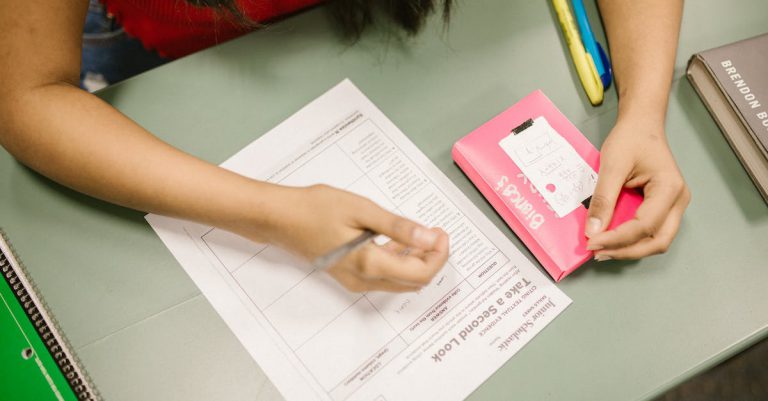If you’re a student or parent who’s heard the term ‘continuation school’ but aren’t quite sure what it means, you’ve come to the right place. In this article, we’ll be providing an overview of what a continuation school is, who attends them, and what their benefits are.
If you’re short on time, here’s a quick answer to your question: A continuation school is an alternative high school designed for students who are at risk of not graduating or have fallen behind in credits.
Throughout this article, we’ll be going over the key features of continuation schools, including their history, how they differ from traditional high schools, and what kind of academic programs they offer. We’ll also be discussing who might benefit from attending a continuation school and what kind of support services are available to students.
A Brief History of Continuation Schools
Continuation schools, also known as continuation education programs, are alternative high schools that serve students who have not been successful in traditional high school settings. These schools offer a more flexible and personalized approach to education, with smaller class sizes and more individualized attention. But where did the idea of continuation schools come from?
Origins in California
The first continuation school was established in California in 1919, in response to concerns about high dropout rates and the need to provide education to working-class and immigrant students. These schools were originally designed to offer a second chance to students who had fallen behind in their studies or were at risk of dropping out. The curriculum was often focused on vocational training and practical skills, such as typing, bookkeeping, and woodworking.
By the 1930s, California had more than 150 continuation schools, serving thousands of students across the state. These schools were seen as a critical part of the educational system, providing opportunities for students who might not have otherwise been able to complete high school.
Expansion across the US
Continuation schools quickly spread beyond California, as other states saw the benefits of this alternative approach to education. By the 1950s, there were continuation schools in every state in the US. These schools continued to serve students who were struggling in traditional high school settings, as well as those who needed a more flexible schedule due to work or family obligations.
Over time, continuation schools evolved to offer a wider range of academic and vocational programs, including online learning and credit recovery programs. Today, there are more than 1,000 continuation schools across the US, serving hundreds of thousands of students each year.
Current trends
Continuation schools continue to play an important role in the educational landscape, providing a second chance for students who might not have otherwise been able to complete high school. These schools have also become increasingly diverse, serving students from a wide range of backgrounds and with different educational needs.
One current trend in continuation education is the use of technology to provide more personalized and flexible learning options. Many continuation schools now offer online courses and digital resources, allowing students to learn at their own pace and on their own schedule. Another trend is the emphasis on college and career readiness, with many continuation schools offering dual enrollment programs and vocational training in high-demand fields.
How Continuation Schools Differ from Traditional High Schools
Continuation schools, also known as alternative schools, serve as an alternative pathway to education for students who are struggling in a traditional high school setting. Here are some ways in which continuation schools differ from traditional high schools:
Smaller Class Sizes
One of the significant differences between continuation schools and traditional high schools is class size. Continuation schools generally have smaller class sizes, which allows for more individualized attention and personalized instruction. In traditional high schools, class sizes can range from 20 to 40 students, making it challenging for teachers to provide individualized attention to each student.
Flexible Schedules
Continuation schools offer more flexibility in terms of scheduling than traditional high schools. They often offer classes in the evenings or on weekends, allowing students to work part-time or take care of other responsibilities during the day. This flexibility can be especially helpful for students who need to work to support themselves or their families.
Personalized Instruction
Continuation schools often provide more personalized instruction than traditional high schools. Teachers in continuation schools work closely with students to identify their strengths and weaknesses and tailor their instruction accordingly. This approach can be especially helpful for students who may have fallen behind in their studies or need extra support to succeed academically.
Academic Programs Offered at Continuation Schools
Continuation schools are alternative high schools that offer programs designed for students who are at risk of not graduating from high school. These schools provide academic programs that are tailored to meet the individual needs of each student. Here are some of the academic programs offered at continuation schools:
Credit Recovery
Credit recovery programs are designed for students who have fallen behind in their coursework and need to make up credits in order to graduate on time. These programs allow students to catch up on missed credits by retaking classes or completing assignments.
According to a study by the National Center for Education Statistics, 89% of continuation schools offer credit recovery programs. These programs have been shown to be effective in helping students graduate from high school on time.
Vocational Training
Vocational training programs are designed for students who are interested in pursuing a career in a skilled trade. These programs provide hands-on training in fields such as automotive technology, construction, and culinary arts.
According to the California Department of Education, 60% of continuation schools in California offer vocational training programs. These programs can be an excellent option for students who are interested in a career that does not require a college degree.
College Preparation
College preparation programs are designed for students who plan to attend college after high school. These programs provide students with the skills and knowledge they need to succeed in college.
According to a study by the National Center for Education Statistics, 63% of continuation schools offer college preparation programs. These programs can be an excellent option for students who need extra support to prepare for college.
| Programs | Percentage of Continuation Schools Offering Program |
|---|---|
| Credit Recovery | 89% |
| Vocational Training | 60% |
| College Preparation | 63% |
Who Attends Continuation Schools?
Continuation schools are designed to help students who face challenges that make it difficult for them to succeed in traditional high schools. These challenges can include academic struggles, personal or family issues, or other circumstances that have led them to fall behind. Here are some of the types of students who typically attend continuation schools:
Students at risk of not graduating
One of the most common reasons that students attend continuation schools is because they are at risk of not graduating. These students may have struggled academically in high school, missed too many classes, or failed to pass required courses. Continuation schools offer these students a second chance to earn their diploma by providing them with the support and resources they need to succeed.
Students who have fallen behind in credits
Another group of students who attend continuation schools are those who have fallen behind in credits. These students may have missed classes due to illness or other circumstances, or they may have failed courses that are required for graduation. Continuation schools offer these students a way to catch up on credits and get back on track to graduate on time.
Students with personal or family issues
Finally, some students attend continuation schools because they have personal or family issues that make it difficult for them to succeed in traditional high schools. These issues can include homelessness, poverty, family problems, or other challenges that make it hard for students to focus on their studies. Continuation schools offer these students a supportive environment where they can receive the help they need to overcome these challenges and succeed academically.
If you or someone you know is struggling in a traditional high school, a continuation school may be a good option to consider. Visit https://www.cde.ca.gov/ls/ai/rf/continuationschools.asp to learn more about continuation schools and whether they might be the right choice for you.
Support Services Available at Continuation Schools
Continuation schools are alternative high schools designed for students who are at risk of not graduating from traditional high schools. These schools are generally smaller, with a more personalized approach to education and a focus on helping students who have fallen behind get back on track. In addition to academic support, continuation schools also offer a range of support services to help students succeed both in and out of the classroom. Here are some of the support services available at continuation schools:
Counseling
Many continuation schools have counseling services available to students. These counselors can help students with a range of issues, including academic struggles, personal problems, and mental health concerns. Counselors can also help students set goals and work towards achieving them, as well as provide support and guidance throughout the school year.
Mental health services
Continuation schools also often have mental health services available to students. These services can include therapy, support groups, and other resources to help students cope with mental health challenges. Mental health services can be particularly important for at-risk students who may be dealing with trauma, stress, or other issues that can impact their academic performance.
Career guidance
Continuation schools may also offer career guidance services to help students plan for their futures. This can include assistance with job applications, resume writing, and interviewing skills, as well as guidance on college applications and financial aid. Career guidance services can be particularly valuable for students who may not have access to these resources elsewhere.
Conclusion
In conclusion, continuation schools provide an alternative educational path for students who may not succeed in traditional high schools. With smaller class sizes, flexible schedules, and personalized instruction, continuation schools offer a unique learning environment that can help students get back on track and graduate. If you or someone you know is struggling in high school, a continuation school may be worth considering. With a range of academic programs and support services available, there’s a good chance that a continuation school can provide the resources needed to help students achieve success.






